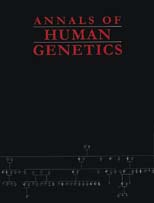No CrossRef data available.
Article contents
Genetic and environmental determinants of plasma high density lipoprotein cholesterol and apolipoprotein AI concentrations in healthy middle-aged men
Published online by Cambridge University Press: 31 July 2002
Abstract
The effects of common variants of cholesteryl ester transfer protein (CETP) (TaqIB), hepatic lipase (HL) (−514C>T), lipoprotein lipase (LPL) (S447X) and lecithin cholesterol acyl transferase (LCAT) (S208T) on the determination of high density lipoprotein cholesterol (HDL-C) and apolipoprotein AI (apoAI) levels were examined in 2773 healthy middle-aged men participating in the second Northwick Park Heart Study. The extent of gene:gene, gene:smoking and gene:alcohol interactions were determined. For HDL-C levels, only CETP genotype was associated with significant effects (p<0·0001), with the B2 allele being associated with higher levels in both smokers and non-smokers. This interaction was significant at the lowest tertile of TG, suggesting that TG levels were rate limiting. As previously reported, CETP, LPL and HL genotypes were all associated with significant effects on apoAI levels (all p<0·01), with carriers of the rare alleles having higher levels and with no evidence of heterogeneity of effects in smokers and non-smokers. LCAT genotype was not associated with significant effects on either trait. There was no significant interaction between any of the genotypes and alcohol consumption on either HDL-C or apoAI levels. All genotypic effects were additive for HDL-C and apoAI. Environmental and TG levels explained more than 20% and 5·5% of the variance in HDL-C and apoAI, respectively. The novel aspect of this finding is that genetic variation at these loci explained in total only 2·5% of the variance in HDL-C and 1·89% of the variance in apoAI levels. Thus despite the key roles played by these enzymes in HDL metabolism, variation at these loci, at least as detected by these common genotypes, contributes minimally to the variance in HDL-C and apoAI levels in healthy men, highlighting the polygenic and multifactorial control of HDL-C.
- Type
- Research Article
- Information
- Copyright
- University College London 2002


